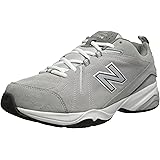Beyond Kombucha: Discover the Bubbly World of Kvass, a Fermented Fruit Elixir
Often, it is found that perfectly good fruit is left uneaten after a gathering, ultimately destined for the compost bin. This common issue of food waste, coupled with a growing interest in gut health and unique beverages, presents a wonderful opportunity. As shown in the video above, there exists a delightful solution to transform this leftover fruit into a refreshing, probiotic-rich drink: kvass. This ancient Eastern European fermented fruit beverage offers a simple, sustainable, and incredibly tasty way to enjoy a natural fizz, making it a fantastic alternative to more commonly known drinks like kombucha.
Understanding Kvass: A Glimpse into Fermented Fruit Drinks
Kvass, as presented, is more than just a bubbly concoction; it is a traditional fermented beverage with a rich history. For probably thousands of years, this drink has been enjoyed, long before the advent of modern soft drinks. At its core, kvass is a non-alcoholic (or very low-alcohol) drink created through the fermentation of fruits, bread, or even vegetables, typically with water and a sweetener. The process involves beneficial microorganisms converting sugars into lactic acid, carbon dioxide, and small amounts of alcohol, resulting in a tangy, effervescent, and often slightly sweet beverage. When made with fruit, a vibrant and naturally flavored drink is produced, bursting with life.
The Simple Science Behind Fruit Fermentation
The magic of kvass is rooted in a straightforward biological process known as fermentation. This natural transformation occurs when beneficial bacteria and yeasts, which are ubiquitous in our environment and on the surfaces of fruits, begin to consume the sugars present in the fruit and added sugar. Subsequently, these microorganisms release byproducts, notably carbon dioxide gas, which gives kvass its characteristic fizz, and lactic acid, contributing to its tangy flavor profile. Moreover, other beneficial compounds are produced, enhancing the nutritional value of the original ingredients. This process is typically allowed to occur at room temperature, making it an accessible project for any home kitchen.
Why Kvass is a Desirable Addition to Your Diet
The appeal of making a fermented fruit beverage like kvass extends beyond its pleasant taste and the novelty of creating something homemade. Many potential health benefits are often associated with fermented foods and drinks, primarily due to their probiotic content.
- Probiotic Boost: Live cultures of bacteria are introduced into the gut, which are thought to aid digestion and support a healthy gut microbiome.
- Nutrient Absorption: Fermentation can predigest certain nutrients, potentially making them more bioavailable for the body.
- Hydration: As a water-based drink, kvass contributes to daily fluid intake in a flavorful way.
- Reduced Food Waste: Utilizing overripe or surplus fruit is an excellent way to prevent waste, aligning with sustainable living practices.
- Natural Carbonation: For those seeking alternatives to sugary sodas, kvass offers a naturally carbonated option without artificial additives.
Crafting Your Own Kvass: A Step-by-Step Guide
Making kvass at home is remarkably simple, requiring minimal equipment and ingredients. The process often involves just fruit, water, and sugar, followed by a period of passive waiting. Here is a more detailed breakdown of how this delightful fermented fruit drink can be made:
1. Selecting the Right Fruit for Your Kvass
The quality and type of fruit significantly influence the final flavor of your kvass. A wide variety of fruits can be used, including berries, stone fruits, citrus, and even tropical options. When choosing fruit, it is often recommended that organic produce be selected to avoid pesticides that could inhibit fermentation. Overripe fruit, which might otherwise be discarded, is perfectly suitable and often has higher sugar content, which fuels the fermentation. For instance, bruised apples, soft peaches, or berries that are past their prime market appearance are ideal candidates. The video suggests using “soggy pre-cut grocery store fruit,” which emphasizes that even less-than-perfect fruit can be given a delicious second life.
2. Preparing Your Ingredients and Equipment
Before beginning, all equipment should be thoroughly cleaned to prevent unwanted bacterial growth.
- Fruit: Roughly chop the selected fruit into smaller pieces. There is no need for peeling in most cases, as beneficial yeasts often reside on the skin.
- Sugar: White granulated sugar is commonly used because it provides a pure food source for the microbes without imparting strong flavors. Honey or maple syrup can also be explored, but they might introduce different microbial communities or slower fermentation. The amount can be adjusted based on the sweetness of the fruit and personal preference.
- Water: Non-chlorinated water is crucial, as chlorine can kill the beneficial bacteria needed for fermentation. Filtered tap water or spring water is ideal.
- Container: A large, clean glass jar (like a half-gallon or gallon canning jar) is usually chosen.
- Cover: A breathable cover, such as a cheesecloth or coffee filter secured with a rubber band, is often used to keep out insects while allowing airflow.
3. Initiating the Fermentation Process
With ingredients prepared, the actual creation of your kvass begins:
- Combine Ingredients: In your clean jar, the chopped fruit is typically placed. Sugar is then added directly over the fruit.
- Add Water: The jar is then filled with non-chlorinated water, leaving about an inch or two of headspace at the top.
- Mix Gently: A clean spoon is often used to stir the mixture until the sugar largely dissolves.
- Cover and Wait: The jar is then covered with the breathable cloth and secured. It is placed on the counter at room temperature, away from direct sunlight.
4. Monitoring and Maturing Your Kvass
The fermentation period is where the magic happens, typically lasting for three to five days, as mentioned in the video. During this time, it is important to observe your kvass:
- Bubbles: Small bubbles rising to the surface and a slight effervescence indicate active fermentation.
- Taste: After a few days, a small amount can be tasted. It should be pleasantly tangy, slightly sweet, and lightly carbonated. If it is too sweet, more time may be needed. If it is too sour, it has likely over-fermented.
- Smell: A pleasant, fruity, slightly yeasty aroma is expected. Any foul or off-putting smells are a sign that something may have gone wrong.
- Mold: Any signs of fuzzy, colorful mold on the surface mean the batch should be discarded. A thin, translucent film (a pellicle, similar to kombucha’s SCOBY) can sometimes form and is usually harmless.
5. Finishing and Flavoring Your Fermented Fruit Drink
Once the kvass reaches the desired taste, it is ready for the final steps:
- Strain: The liquid is strained through a fine-mesh sieve into clean bottles or jars, discarding the fruit solids.
- Second Fermentation (Optional): For enhanced carbonation and flavor, the strained kvass can undergo a second fermentation. This involves bottling the kvass in airtight bottles (swing-top bottles are excellent) and adding a small amount of additional sugar or fruit juice. These bottles are then left at room temperature for another 12-48 hours. Caution is advised, as pressure can build, so “burping” the bottles daily (opening briefly to release gas) is recommended.
- Refrigerate: Once sufficiently bubbly or after the initial fermentation, the kvass is moved to the refrigerator. This slows down fermentation, preserving its flavor and carbonation.
Enjoying Your Homemade Kvass
The beauty of kvass lies in its versatility. As suggested in the video, it can be enjoyed in various ways:
- Straight Up: A chilled glass of kvass is wonderfully refreshing on its own, offering a healthy, low-sugar alternative to sodas.
- Spiked: For adult enjoyment, it can be mixed with spirits. The video humorously suggests “your favorite adult apple juice,” implying a blend with cider or other alcoholic beverages for a unique cocktail.
- Popsicles: Freezing kvass into popsicles is an excellent way to create a healthy, cooling treat, especially for children.
- Smoothie Base: It can be incorporated into fruit smoothies for an added probiotic kick and a tangy flavor.
- Culinary Uses: Some traditional recipes utilize kvass as an ingredient in soups or stews, adding a unique sour note.
Experimentation with different fruits and flavorings (like ginger, mint, or citrus zest during the second fermentation) is greatly encouraged. This allows for the discovery of countless delicious variations of this humble yet powerful fermented fruit beverage, ensuring that no leftover fruit goes to waste and a continuous supply of healthy kvass is always available.











